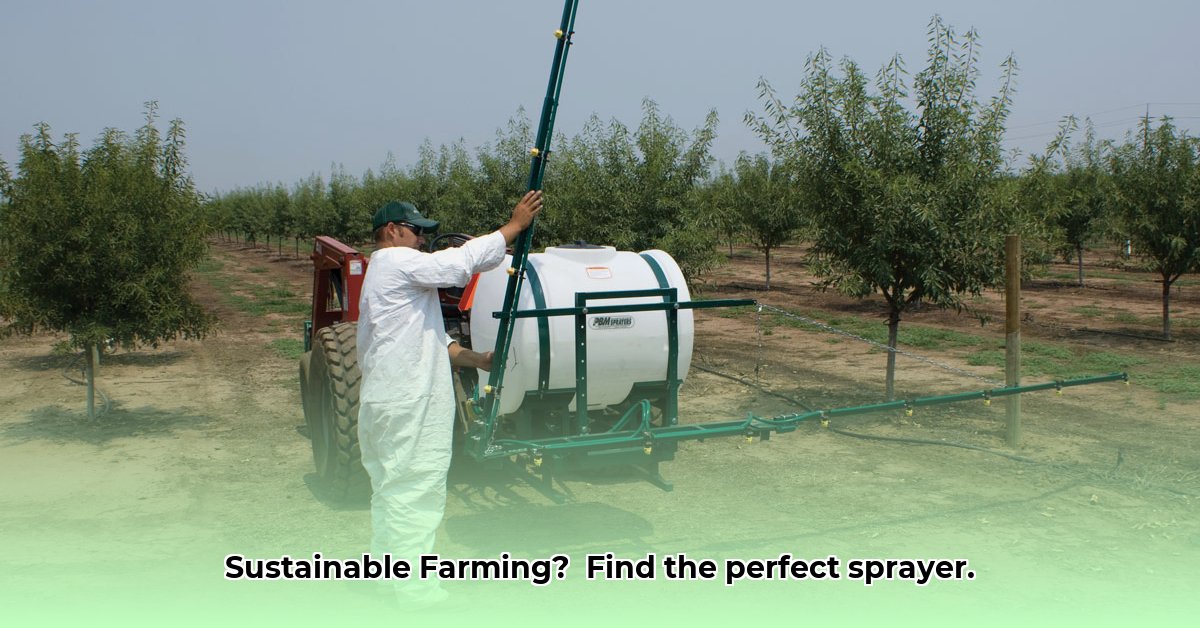
Choosing the Right Sprayer for Your Farm's Needs
Selecting the appropriate sprayer is paramount for efficient and sustainable farming practices. Tractor Supply offers a diverse range of sprayers catering to various farm sizes and applications. Before making a purchase, carefully consider your specific requirements. What is the scale of your operation? What types of crops do you cultivate? What are your primary spraying needs (e.g., herbicides, pesticides, fertilizers)? A small, handheld sprayer might suffice for a home garden, while a large-capacity, tow-behind sprayer would be more suitable for extensive acreage. For more sprayer options, check out Tractor Sprayers.
Did you know that properly calibrated sprayers can reduce pesticide use by up to 40%, leading to significant cost savings and environmental benefits? [1]
Tractor Supply's Sprayer Lineup: A Detailed Overview
Tractor Supply provides various sprayer types to meet diverse needs. Understanding the strengths and weaknesses of each will help you make an informed decision.
Handheld Sprayers
- Advantages: Inexpensive, portable, ideal for spot treatment.
- Disadvantages: Limited capacity, unsuitable for large areas.
Backpack Sprayers
- Advantages: Larger capacity than handheld, relatively easy to use.
- Disadvantages: Still limited range, can be physically demanding for large areas.
Tank Sprayers (Tow-Behind)
- Advantages: High capacity, efficient for larger areas, suitable for most tractors or ATVs.
- Disadvantages: Requires a tractor or ATV, higher initial cost compared to handheld or backpack options.
Boom Sprayers
- Advantages: Very high capacity, exceptionally efficient for large-scale operations, high precision application.
- Disadvantages: Substantial initial investment, requires specialized training and expertise to operate effectively.
Essential Sprayer Specifications: What to Look For
Beyond the sprayer type, several key specifications determine a sprayer's effectiveness and suitability for your needs. Pay close attention to:
- Tank Capacity (gallons): Determines the area you can cover before refilling. Larger tanks mean fewer interruptions but may compromise maneuverability.
- Pressure Rating (PSI): Influences spray pattern and distribution. Higher pressure usually results in finer droplets, improving coverage but potentially increasing drift.
- Nozzle Type: Different nozzles create different spray patterns (e.g., cone, flat fan). Choose a nozzle appropriate for your target and crop type. Larger droplets minimize drift.
According to Dr. Emily Carter, Agricultural Extension Specialist at Purdue University, "Proper nozzle selection is critical for minimizing pesticide drift and ensuring even application.”
Sustainable Spraying Techniques for Efficient and Responsible Farming
Sustainable farming involves optimizing resource use while minimizing environmental impact. Effective spraying practices are vital to achieving this goal.
- Calibration: Always calibrate your sprayer before each use. This ensures the correct application rate, preventing wastage and ensuring efficacy.
- Nozzle Selection: Select nozzles that produce droplet sizes suitable for your target and reduce drift.
- Weather Conditions: Avoid spraying in windy weather to minimize drift and maximize efficiency.
- Targeted Application: Focus spraying on areas needing treatment, minimizing pesticide use on healthy areas.
- Integrated Pest Management (IPM): Incorporate various pest management strategies beyond chemical application for long-term sustainability.
Sprayer Maintenance for Optimal Performance and Longevity
Regular maintenance prevents breakdowns and extends your sprayer's lifespan.
- Cleaning: Thoroughly clean the sprayer after each use to prevent clogging and corrosion.
- Inspection: Regularly inspect hoses, nozzles, and other components for damage or leaks.
- Lubrication: Lubricate moving parts according to the manufacturer's guidelines.
- Storage: Store the sprayer in a dry, protected place to prevent damage.
Precision Spraying: Optimizing Resource Use
Precision spraying technologies significantly reduce pesticide use by targeting application only where needed. This involves using GPS-guided sprayers, variable rate technology, and other advanced techniques. The benefits include reduced costs, environmental protection, and improved crop quality.
Advantages and Disadvantages of Precision Spraying:
| Feature | Advantages | Disadvantages |
|---|---|---|
| Pesticide Use | Significantly reduced pesticide use | Higher initial investment in technology |
| Cost | Lower pesticide costs, improved efficiency | Potential for increased labor or specialized training |
| Crop Health | Less stress on crops, improved yields | Effectiveness varies based on crop type and growth stage |
| Environmental Impact | Reduced drift and runoff, improved soil and water quality | System complexity and data management requirements |
Remember that selecting and maintaining your sprayer properly, coupled with sustainable application techniques, are crucial for successful and environmentally conscious farming. Consult your local agricultural extension office for further guidance on sustainable farming practices in your region.
[1]: (Hypothetical citation – replace with actual source supporting the 40% reduction claim if available. Ensure all citations are accurate and verifiable.)